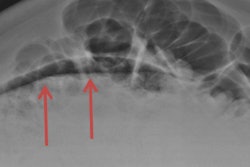
Communication errors are the No. 1 reason for adverse events in hospitals, causing an estimated 44,000 to 98,000 deaths each year, the Joint Commission has said. The radiology department is not immune to these errors, and they're not just at the point of results reporting, according to a study in the American Journal of Roentgenology.
Communication errors in radiology can happen at any step in the imaging process, researchers from Beth Israel Deaconess Medical Center found. And these mistakes can dramatically compromise not only patient care, but also the department's workflow efficiency and patient satisfaction.
 Dr. Bettina Siewert from Beth Israel Deaconess Medical Center.
Dr. Bettina Siewert from Beth Israel Deaconess Medical Center."Previous studies have focused solely on errors in results communication," wrote lead author Dr. Bettina Siewert and colleagues. "However, communication errors in radiology can occur at any step during the imaging process. ... Surprisingly, our study showed that the majority of communication errors in radiology occurred at steps other than result communication -- namely, during ordering, scheduling, performance, and interpretation of a study" (AJR, March 2016, Vol. 206:3, pp. 573-579).
Who's on first?
The researchers reviewed their institution's quality assurance database for communication errors reported between August 2004 and December 2014. They collected 380 studies in which mistakes occurred, identifying when the error happened and grading the effect of the miscommunication on patient care on a five-point scale (with 0 being no impact and 4 being catastrophic impact).
Siewert and colleagues found that 52.4% of errors in the 380 cases occurred at steps other than the communication of results, although results communication was the single most common point of error (47.6%). Other types of errors were distributed as follows:
- 30% at exam performance
- 13.9% at ordering
- 4.7% at scheduling
- 3.7% at study interpretation
"Most radiology departments have protocols in place intended to prevent results communication errors," said Siewert, vice chair for quality and safety in the radiology department, in a conversation with AuntMinnie.com. "Even though results reporting remains a prime source of communication error, we need to be alert to the fact that communication errors can also arise during the scheduling, performance, or interpretation of imaging studies."
As for the mode of the mistakes, 33.7% were found in written reports, 31% were verbal, and 39.7% were in written electronic communication, according to Siewert and colleagues. However, lack of communication was the single most common type, followed by communicating faulty information and misunderstanding correct information.
"Communication errors most frequently involved the radiologist and occurred most commonly between the radiology physician and referring physician and between the radiology physician and the technologist," the authors wrote. "In 46.9% of these cases, the error was due to a lack of communication, underscoring the importance of establishing frequent and robust communication routes between these groups."
In addition, patient care was affected in well over a third of the cases -- 23.4% of which were major effects. Examples include the following:
- Delays in the diagnosis of a malignancy (ranging from nine days to four years)
- Delays in the diagnosis and treatment of emergent findings (such as acute fracture, ruptured ectopic pregnancy, deep venous thrombosis, and acute appendicitis)
- Unnecessary surgical procedures (such as image-guided biopsies, surgical re-excision for breast biopsies, and erroneous bilateral sentinel lymph node injection)
In terms of workflow efficiency, these mistakes generated more work in 22% of the cases, most frequently for the radiologist and the technologist, Siewert and colleagues found.
Hard to say I'm sorry?
Patient satisfaction can be difficult to assess, but it's worth trying, especially since errors in care can lead to patients losing trust in the medical system and their doctors.
The researchers found that 24% of patients or physicians noted dissatisfaction with the radiology department due to a communication issue -- and this is likely an underestimation; the group cited a 2004 study by Kuzel et al in the Annals of Family Medicine that suggested emotional and psychological trauma caused by errors can be worse than actual physical complications.
And patient dissatisfaction can lead to clinicians referring to other imaging facilities or to patients leaving the institution, Siewert said.
"For understandable reasons, communication errors resonate very deeply for patients, " she said. "They take them personally, and it can be hard for the department's -- or even the individual radiologist's -- reputation to recover from the fallout. This is true even when the clinical impact of the error is minimal."
What can be done to minimize communication errors at any point in the imaging process? Make use of guidelines for direct communication of critical results, put a monthly performance audit protocol in place, and use decision-support tools that direct the referring physician to the appropriate study.
Just be sure that communication is clear.
"In general, I would say that radiologists can’t underestimate the importance of precise and pro-active communication, at all steps throughout the imaging process," Siewert said.



















